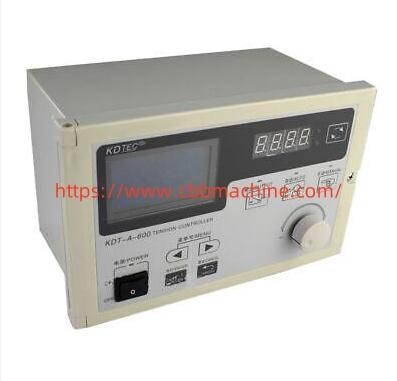Achieving accurate web tension begins with selecting the right Tension Controller to ensure your production line operates smoothly and efficiently.
In industries where material winding, unwinding, or processing is involved—such as paper, film, textiles, or flexible packaging—the precision and reliability of tension control systems directly influence product quality. An imbalanced tension can lead to misalignment, stretching, tearing, or even machinery malfunction. Therefore, integrating a proper controller isn’t optional—it’s vital.
A tension controller functions by continuously monitoring the tension applied to the material and adjusting brake or clutch output to maintain a consistent level. Modern controllers are highly sensitive and reactive to changing load demands, even in high-speed operations. This dynamic response ensures that materials remain flat and aligned without slack or excess tightness.
There are two main types: closed-loop and open-loop systems. Closed-loop systems provide more accuracy by constantly receiving feedback from tension sensors. These are often used in applications demanding high-precision control. Open-loop controllers, while simpler, are suitable for processes where tension variation is more predictable and does not need frequent correction.
Digital controllers have become increasingly popular, offering user-friendly interfaces and programmable settings for different material types and production stages. These allow for fine-tuned control with minimal human error. Features like PID (proportional–integral–derivative) control, auto-tuning, and memory storage further enhance consistency and simplify operator interaction.
Installation flexibility also plays a role. Some controllers are designed to work with various sensors—load cells, dancer rollers, or ultrasonic detectors—allowing manufacturers to tailor the system to specific layout requirements. This adaptability helps integrate tension controllers into both new and existing machinery without needing extensive modification.
Energy efficiency is another notable benefit. A well-calibrated tension system prevents overworking motors and brakes, reducing unnecessary energy consumption and mechanical wear. This contributes to sustainability goals and lowers long-term maintenance costs.
Maintenance routines are relatively straightforward. Regular calibration, firmware updates (in digital models), and visual inspections of sensors and actuators ensure prolonged accuracy and system health. Promptly addressing signal delays or sensor drift can prevent tension anomalies before they become serious.
Overall, the reliability of a tension control system has a direct impact on production stability, material yield, and final product quality. In competitive manufacturing environments, even small gains in precision and speed can result in significant efficiency improvements.
For more information about tension control systems, sensor compatibility, and integration tips, please visit https://www.cbbmachine.com/news/industry-news/tension-controller-types-importance-applications-and-more.html
